Poster Presentations:
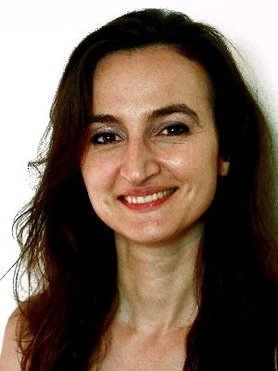
Associate Professor
Delft University of Technology
Remote Sensing-based Assessment of Post-Earthquake Building Reconstruction
Co-Authors: Fatemeh Foroughnia (Delft University of Technology), Valentina Macchiarulo (Delft University of Technology), Pietro Milillo (University of Houston), Michael R.Z. Whitworth (AECOM), and Kenneth Gavin (Delft University of Technology
Abstract: Enhancing the resilience of urban areas to earthquakes requires evaluating the progress of building reconstruction in the years following the event. Remote Sensing (RS) techniques provide timely, cost-effective imagery over large areas, making them well-suited for regional-scale assessments of reconstruction efforts. However, most RS studies have relied on manual change detection analysis of satellite images to assess reconstruction. This study introduces a new automated RS method for evaluating post-earthquake building reconstruction using Multi-Temporal Synthetic Aperture Radar Interferometry (MT-InSAR). The proposed method involves a two-stage analysis to detect changes connected with building reconstruction years after an earthquake. The first stage identifies urban zones showing significant changes at a regional scale, while the second stage focuses on detecting individual buildings that have undergone changes due to reconstruction activities. These changes can be connected to reconstructed, under-construction and collapsed buildings. The method was applied to assess building reconstruction in Kathmandu, Nepal, following the 2015 Gorkha earthquake. Two stacks of high-resolution SAR images were acquired before and after the earthquake for the MT-InSAR analysis. The regional-scale analysis identified multiple urban reconstruction zones, which were further analysed at the building level. The building-level analysis identified the locations of buildings and the extent of reconstruction-related changes. Validation against field observations confirmed that the method accurately detects buildings that are still collapsed, demolished, under construction, or fully rebuilt. This study highlights the potential of the MT-InSAR technique to evaluate building reconstruction, thus contributing to urban resilience planning.
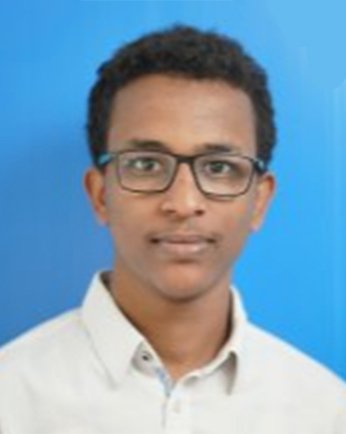
Graduate Student Researcher
Texas A&M University
Holistic risk assessment of aging wooden residential buildings subjected to seismic hazards
Co-Authors: Maria Koliou (Texas A&M University)
Abstract: Most residential buildings in the U.S. are constructed primarily from wood, and this is true across the country, including in areas prone to earthquakes. These buildings vary widely in age and, consequently, in their ability to withstand seismic events. There is a lack of comprehensive risk assessments to evaluate their resilience and robustness. This study addresses this gap by examining the earthquake risk associated with buildings of different ages and estimating potential losses (direct and indirect) in earthquake-prone regions. The study focuses on a residential building located in seismically active regions in the US (including Northern and Southern California and the Pacific Northwest). Through probabilistic simulations for different return periods, the research estimates the impact of an earthquake on this building, considering multiple factors including direct costs, downtime, fatalities, cases of post-traumatic stress disorder (PTSD), and the building’s functional recovery. Through these analyses, the study aims to provide a detailed understanding of how buildings of different ages might perform during an earthquake and the types of losses they could incur and therefore offering valuable insights for policymakers, homeowners, and insurance companies to mitigate potential damages from earthquakes.
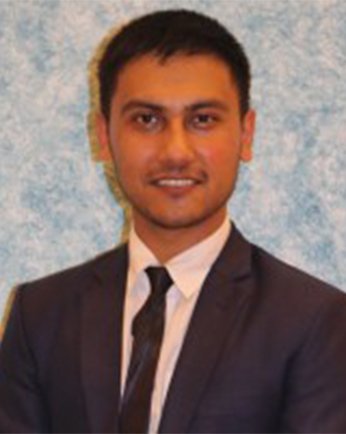
Graduate Student Researcher
University of Southern California
Evaluation and Comparison of Bias in Simulated Ground Motions for Moderate Magnitude Earthquakes in Southern California and San Francisco Bay Area
Co-Authors: Chukwuebuka Nweke (University of Southern California) and Robert Graves (USGS)
Abstract: This study employs the Graves-Pitarka broadband ground motion simulation method, integrated within the SCEC Broadband Platform (BBP), to perform finite fault simulations for moderate magnitude earthquakes in Southern California and the San Francisco Bay Area (SFBA). We selected events with magnitudes ranging from M 3.95 to 5.55, each with at least 24 recordings within a 50 km hypocentral distance. The dataset includes 51 events with 8,908 recordings from Southern California and 26 events with 4,197 recordings from the SFBA. The primary objective is to evaluate bias in simulated ground motions relative to observed data, focusing on Effective Amplitude Spectra (EAS) and Pseudo Spectral Acceleration (PSA). Preliminary findings reveal significant bias, especially at frequencies below 1 Hz, with SFBA events showing greater bias than those in Southern California. We hypothesize that this bias stems largely from earthquake source characteristics, particularly the empirical magnitude-rupture area scaling relationship used in the simulations, as proposed by Leonard (2010), which appears to falter for lower magnitude events. This hypothesis is supported by the 2008 M 5.39 Chino Hills earthquake in Southern California. However, validation is constrained by the lack of finite fault models defining rupture areas for other events. Ongoing research aims to better understand the effects of fault rupture area, stress drop, and average slip on the observed bias for both regions, and includes a sensitivity analysis of other source attributes, such as rupture speed, to explore potential solutions.

Graduate Student Researcher
UC Berkeley
Inverse Design of Seismically Isolated Steel Structural Systems for Functional Recovery
Co-Authors: Tracy Becker (University of California Berkeley)
Abstract: Under current provisions of ASCE 7-22, conventional structures typically achieve collapse risk targets, and higher performance objectives are enabled via the presence of an importance factor in the design process. However, for base isolated structures, no such process exists for the prescription of higher performing designs. Moreover, as design shifts toward functional recovery, there is a lack of codified design procedures to achieve desired decision variables (DVs), such as probability of replacement, component repair cost, and downtime of the building. To directly translate isolated structural design to performance targets without iterative analysis, an effective metamodel mapping the design variable combinations to their resulting performance is proposed. A database of isolated steel moment resisting frames and concentric braced frames, with varying design parameters, earthquake inputs, and structure configurations is constructed and subjected to ground motions via nonlinear time history analysis using OpenSees. Probabilistic damage and loss estimation is performed using the FEMA P-58 framework using the output engineering demand parameters. Gaussian process-based (GP) models are then constructed for each system to predict DVs using the structures’ input parameters, then utilized to estimate DVs for the entire considered design space. Optimization is carried out on the upfront cost, constructability, and DV performance of the designs conforming to certain objective thresholds. The inverse design framework enables efficient selection of optimal design parameters, such as bearing stiffness, required isolation moat gap, and superstructure overstrength needed to achieve the desired repair cost/downtime for structures, allowing for buildings to maintain functionality after earthquakes.

Postdoctoral Scholar
University of California, San Diego
Detailed finite element modeling of URM Walls retrofitted with steel strongbacks
Co-Authors: Andreas Stavridis (University at Buffalo), Michel Bruneau (University at Buffalo), and Kallol Sett (University at Buffalo)
Abstract: The numerical simulation of the response of unreinforced masonry (URM) structures is a rather challenging task due to the complex failure patterns that may develop. The task is even more difficult once seismic retrofits are considered. Developing a methodology to effectively capture the behavior of URM is important for the structural engineering profession considering the need to assess and implement retrofit strategies for these vulnerable structures. This study presents a novel detailed finite element (FE) modeling scheme for URM walls with steel strongbacks; the most commonly used retrofit method in the US. The scheme employs a combination of continuum Lagrangian finite elements along with contacts to simulate the large displacement and rocking response observed in URM structures. The presentation will discuss the modeling scheme and its calibration, as well as a comparison with experimental data from material-level specimens to the full-scale retrofitted specimens tested in the laboratory. The comparison indicates that the numerical models can capture the experimental force-displacement response, as well as the failure patterns and crack locations and anchor pullout. Further, the validated numerical models are used in a parametric studies to investigate the influence of material and design parameters on the performance of these structures.
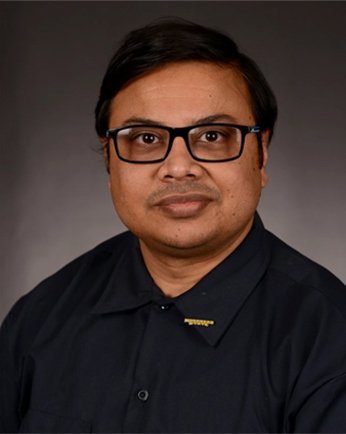
Assistant Professor
Morehead State University
Floor-isolation for mitigation of non-structural damage and human injury
Co-Authors: Ryan P Justice
Abstract: In the face of earthquakes, occupants of various buildings are at risk of injury or even death, even with the current gold standard, i.e., base isolation for earthquake protection. Base isolation separates the superstructure of a building from its foundation using isolators. This can protect the building from structural damage, but damage to nonstructural components of the building is still unavoidable. This can lead to grave injuries or even death to occupants, especially to occupants of hospitals. In the event of an earthquake, equipment throughout a hospital can roll or slide fast enough to break bones or cause brain damage. Our research aims to investigate a new method of preventing structural and nonstructural damage to buildings. This method is referred to as floor isolation. In addition to placing the isolators only between the foundation and superstructure, they are instead placed between each floor of the building. In a small-scale experiment, we found that accelerations were reduced by an average of 60% in the floor-isolated building compared to the base-isolated building, in addition to an increase in the inherent (aerodynamic) damping of the model. The gap between isolated floors can further be utilized for building augmented wind turbines.
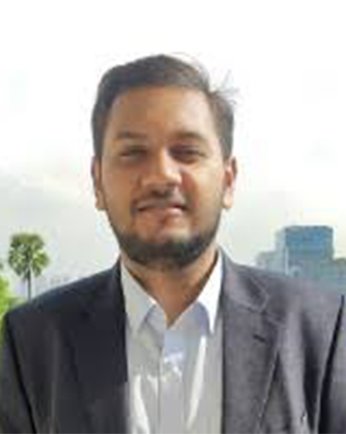
Graduate Student Researcher
University of Southern California
Sub-Basins and Spatial Distribution of Ground Motion Amplification in the Southern California Region
Co-Authors: Chukwuebuka Nweke (University of Southern California)
Abstract: Sedimentary basins are depressions in the Earth's surface filled with layers of soft sediments that significantly influence seismic ground motion through complex wave propagation phenomena. These phenomena are referred to as basin effects, and they are characterized by the focusing, reflection, and trapping of seismic waves, which lead to amplification and prolonged duration of ground shaking. In Southern California, the Los Angeles Basin (LAB) exemplifies the critical nature of these effects, housing over nine million people and numerous essential infrastructure systems amidst high seismic activity.
Previous investigations have revealed that ground motion amplification in the LAB is, on average, 22% higher than the global mean. However, this basin-wide assessment masks substantial spatial variability, with some sites experiencing more than double the average amplification. We hypothesize that this spatial variability is primarily driven by subsurface structures and geologic contacts forming distinct sub-basins within the greater LAB, each with unique seismic response characteristics.
To address this, we propose a novel framework for defining and analysing sub-basin regions within the LAB. Our methodology integrates topographic analysis, spatial analysis of ground motion residuals, and geomorphological, geologic data and faults to delineate sub-basin boundaries. We investigate the azimuthal dependency of sub-basin effects by analysing the relationship between source azimuth and ground motion amplification patterns.
This comprehensive approach aims to establish an innovative method for characterizing site response in complex sedimentary basins. By capturing the nuanced effects of within-basin structures, as well as identifying factors influencing basin edge effects and potential regional path dependencies, we expect to significantly improve the accuracy of site-specific seismic hazard assessments.